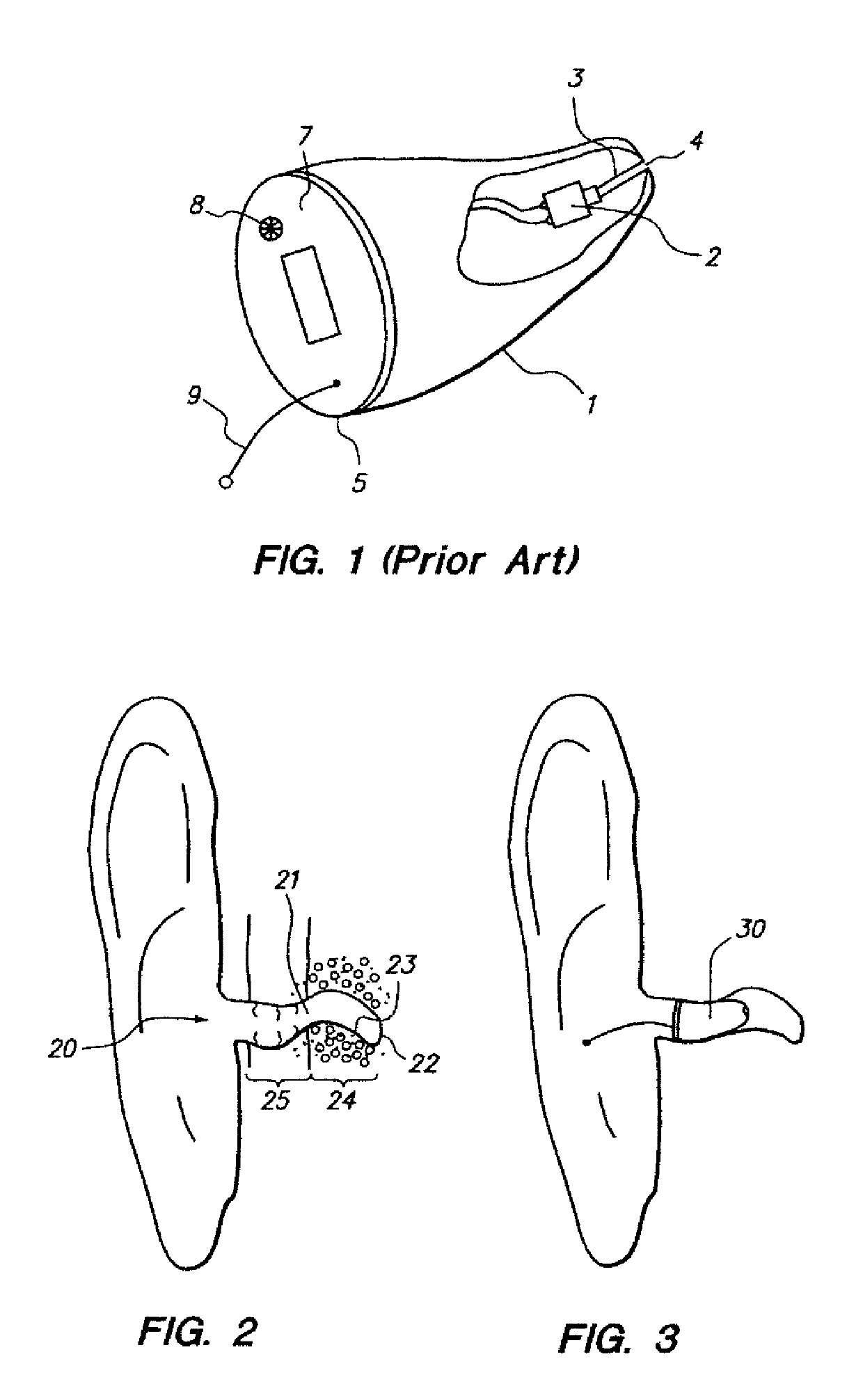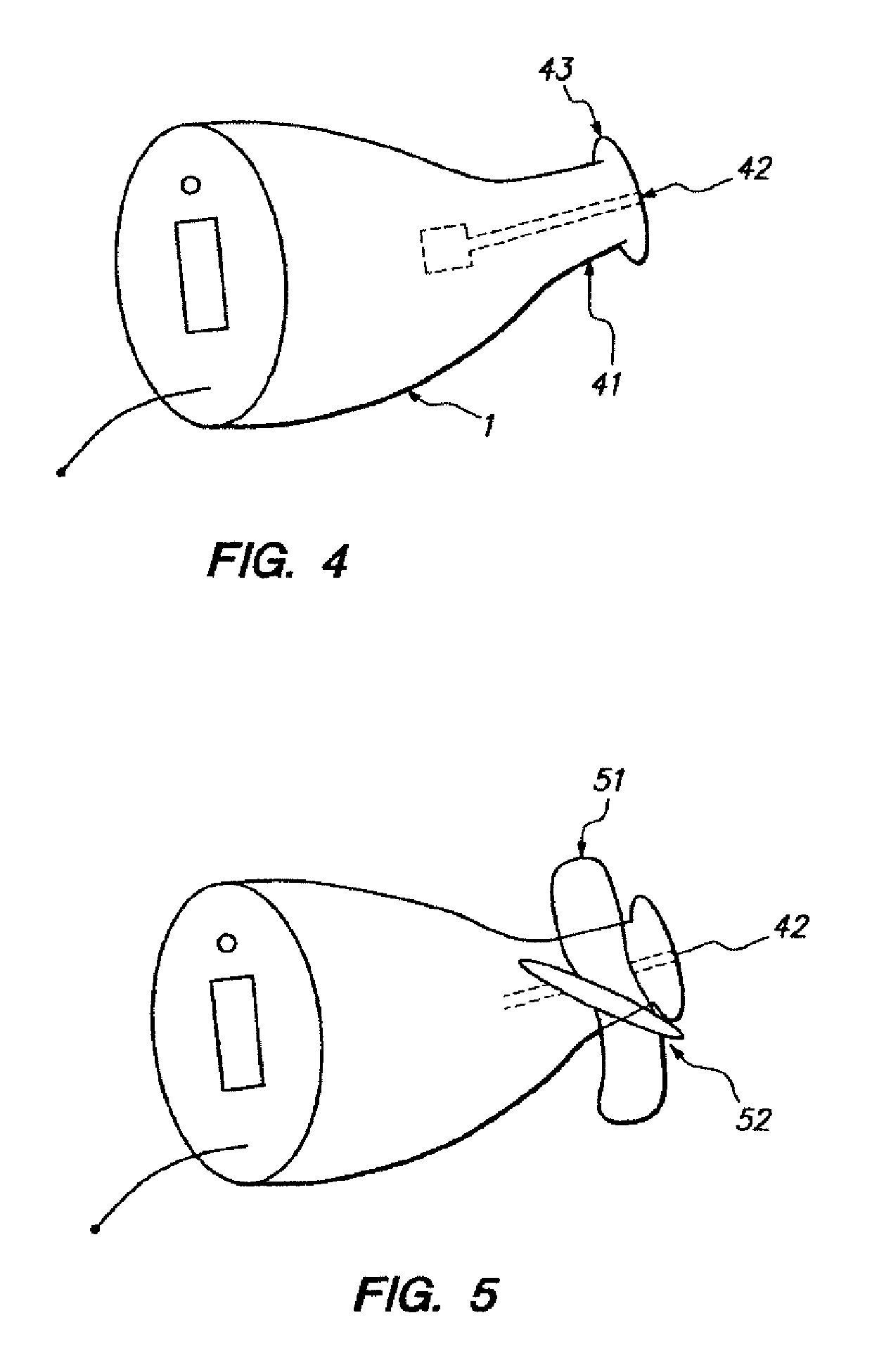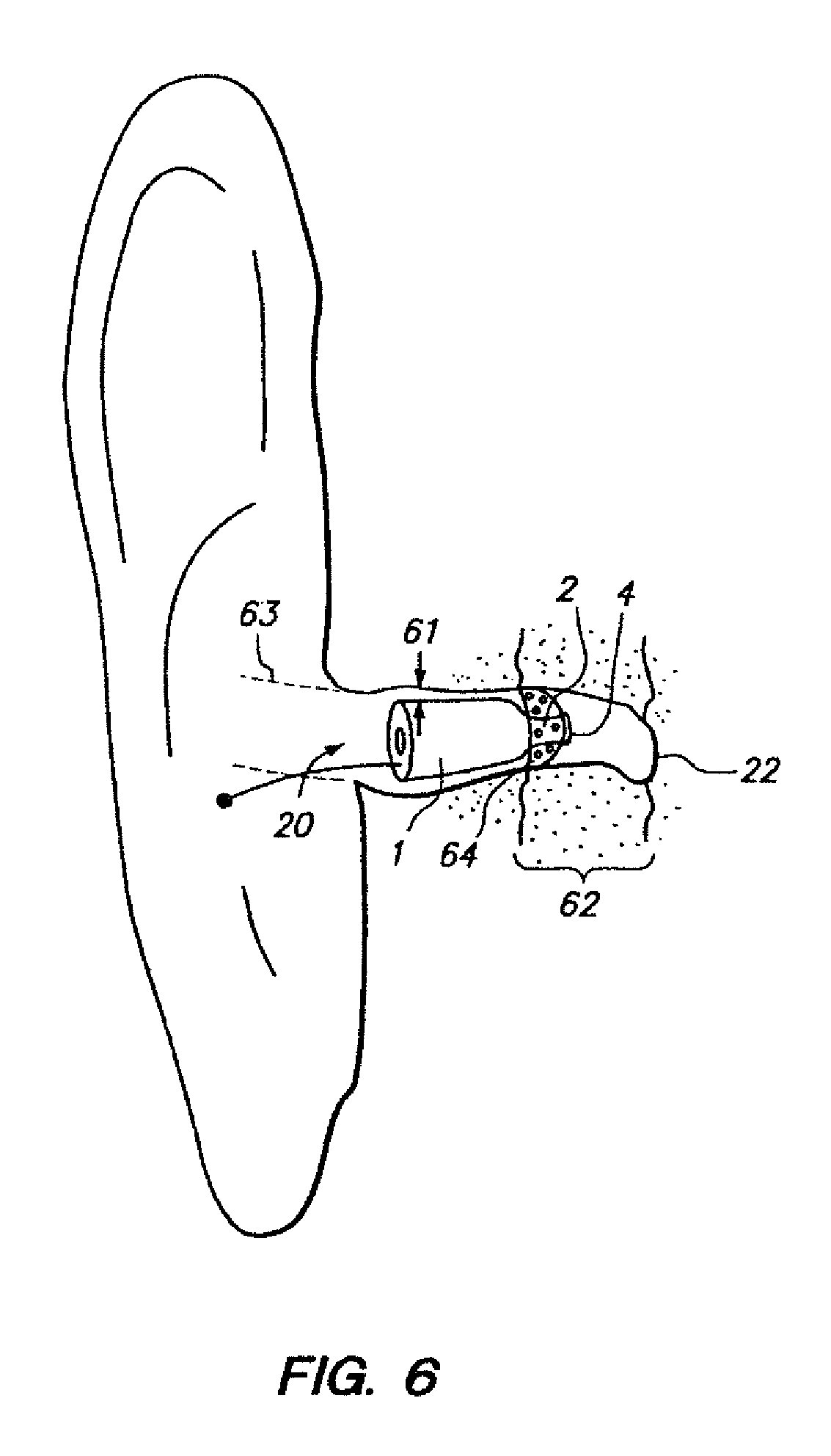Open fit canal hearing device
a technology of open fit and hearing aid, which is applied in the direction of completely in canal hearing aids, ear support sets, non-occlusive ear tips, etc., can solve the problem of limiting the “open” of flexible mounting members
- Summary
- Abstract
- Description
- Claims
- Application Information
AI Technical Summary
Benefits of technology
Problems solved by technology
Method used
Image
Examples
example 1
[0047]A wearer with moderate hearing loss was fitted with a custom molded conventional digital type CIC hearing aid, without active feedback control and conforming to the wearer's ear canal. The aid was vented by means of a 0.8 mm vent tube extending near the case tip and through an opening in the faceplate. The aid was then completely inserted into the wearer's ear and retained through contact with the wearer's ear canal. The aid is adjusted to provide sufficient amplification to the satisfaction of the wearer.
example 2
[0048]The same hearing aid circuit of Example 1 was placed in a smaller diameter case, but without the conventional vent tube arrangement described in Example 1. The case tip was then fitted with the propeller type insert 51 of FIG. 5. The open area of the propeller insert was about 50% in its unmounted state. The insert 51, was then secured in the wearer's inner ear by contact of the flexible propeller insert substantially within the bony region of the wearer's ear canal. An average air gap of about 1 mm was formed around the case and along its length. As the case is substantially concentrically mounted within the ear canal, a substantially annular gap is formed between the case and the ear canal. The propeller insert provided about 40% open area after being mounted. The wearer commented immediately on the comfort of the fit and also commented that he could hear more naturally not hearing his own voice when he talked. This aid provided 25% db of gain, without feedback.
example 3
[0049]The same hearing aid circuit and case of Example 2 was then compared using a domed insert mounted at the case tip end. The domed insert was fitted with openings around near central portion of the dome so that they would not be blocked after insertion into the wearer's ear. The open area was estimated at 25% after insertion of the aid into the wearer's ear. This aid provided a 30% improvement of gain with similar favorable responses in Example 2.
PUM
 Login to View More
Login to View More Abstract
Description
Claims
Application Information
 Login to View More
Login to View More - R&D
- Intellectual Property
- Life Sciences
- Materials
- Tech Scout
- Unparalleled Data Quality
- Higher Quality Content
- 60% Fewer Hallucinations
Browse by: Latest US Patents, China's latest patents, Technical Efficacy Thesaurus, Application Domain, Technology Topic, Popular Technical Reports.
© 2025 PatSnap. All rights reserved.Legal|Privacy policy|Modern Slavery Act Transparency Statement|Sitemap|About US| Contact US: help@patsnap.com



